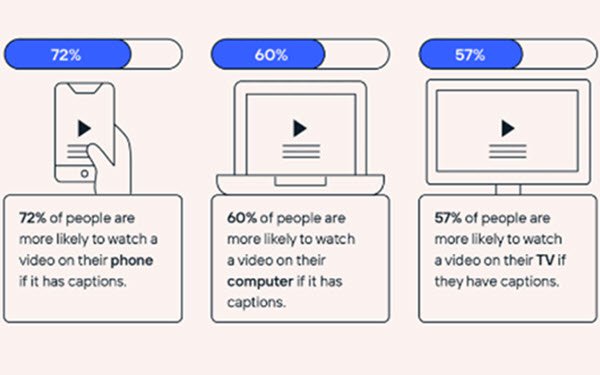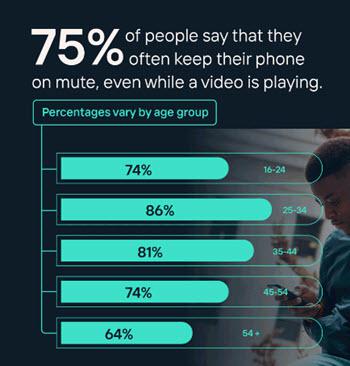
Now that sites tend to be designed as feeds, many
consumers are keeping their phones muted even when videos are playing — causing a growing number to expect captions on videos.
Further, many now say that they’re more likely to
watch videos on TVs and computers if they offer captions.
Those are takeaways from a survey of 750 people in the U.S. and Canada conducted on Pollfish earlier this month by global supply-side
ad platform Sharethrough. Respondents, who took the survey on their mobile phones, were distributed to represent the population of North Americans aged 16 and older, according to the company.
The small poll’s results are directionally intriguing.
Specifically, 75% of those surveyed, on average, said that they often keep their phones on mute even when a video is
playing.
Those aged 25 to 34 and 35 to 44 were most likely to do so:
advertisement
advertisement

In addition, 72%, on average, said they’re more likely to watch a video on
their phone if it has captions — and 60% and 57%, respectively said they’re more likely to watch videos on their computers and TV if there are captions.
Further, not only did
nearly half say that they now watch TV in general with captions on; the practice is most prevalent among younger adults, rather than the older viewers that one might think would be more likely to
resort to captions due to hearing challenges.
Fifty-five percent of those between 25 and 44, 51% of those 16 to 24, and 47% of those 45 to 54 said they watch TV with captions on, while just
36% of those 55 and older said the same.
Dishearteningly for advertisers, the poll also confirmed the use of phones and other second screens as a diversion from TV ads, with 79% of these
respondents saying they take out their phones, tablets or computers when a commercial starts playing on TV.
Most (70%) said they used devices during TV ads to engage with social media, 48% to
check email or text, 38% to browse the web, 36% to play games, and 9% to do work.
Not surprisingly, the poll also confirmed the age gap when it comes to traditional pay TV, with 64% of those
16 to 44 saying they’ve cut the cord, and 56% of those 45 and up saying they still pay for cable.